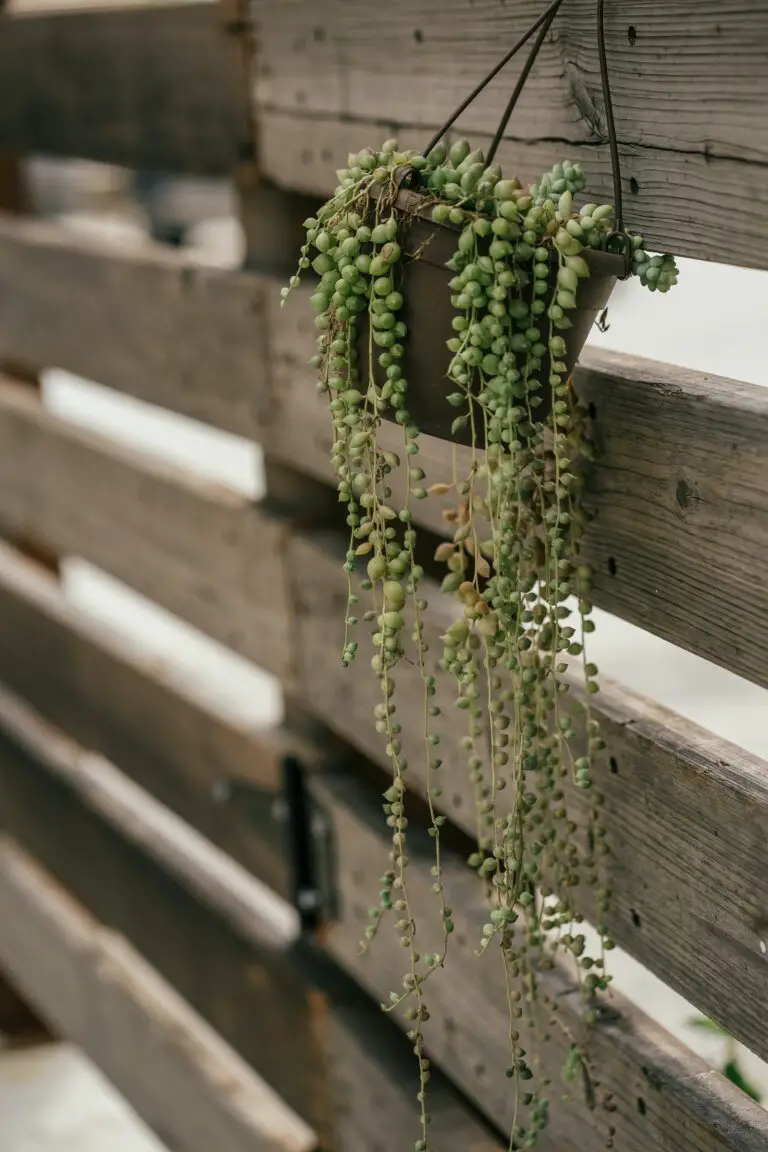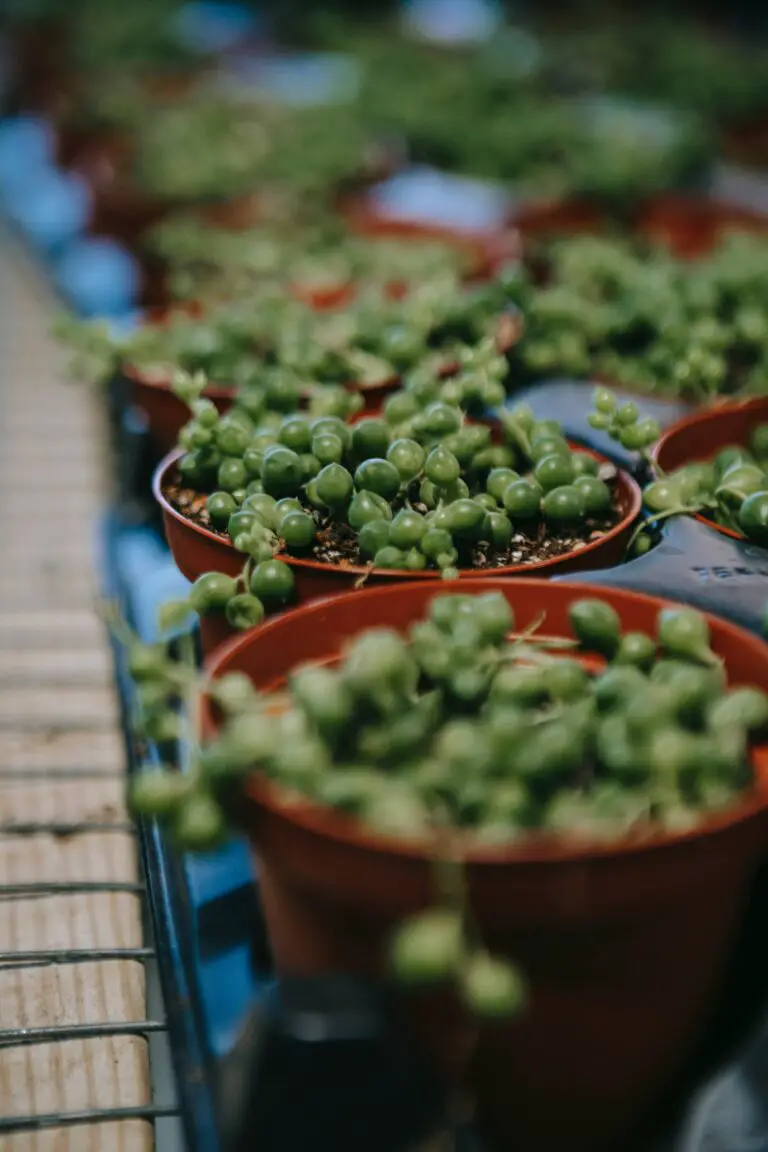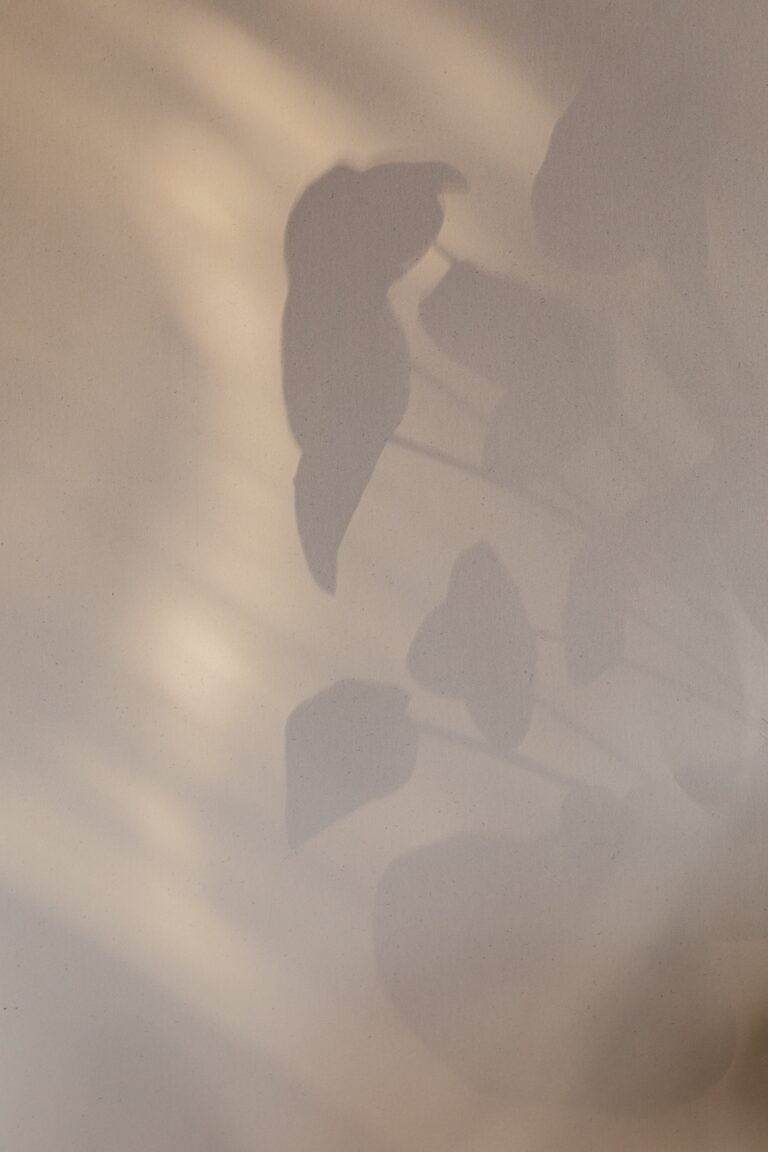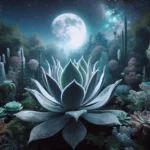Discovering Senecio Mandraliscae
Imagine a hue of blue so intense and vibrant that it captures the very essence of the ocean’s depth within your garden landscape. This is the magic that Senecio Mandraliscae, also known as Blue Chalksticks, bestows upon its admirers. Native to the warm climes of South Africa, this succulent species takes center stage with its uniquely colored foliage and a hardiness that makes it a gem among gardeners and landscapers.
With leaves that mimic the shape of plump, miniature underwater coral branches, Senecio Mandraliscae offers a textural element to any planting space. This sought-after succulent thrives under the kiss of the sun, its fleshy leaves a testament to its water-wise nature. When crafting a drought-tolerant garden, consider incorporating this species to create a seascape illusion – an oasis of serenity that reflects the hues of a deep, tranquil sea.
In the bustling life of a city dweller, maintaining a patch of blue tranquility becomes not just a visual feast, but a mindful practice. As urban gardens become more prevalent, the use of Senecio Mandraliscae is on the rise, with balcony gardeners and terrace landscapers harnessing its ability to bring a piece of the oceanic blues skyward. Check out this video for helpful tips on nurturing your own patch of Blue Chalksticks.
Each stem of Senecio Mandraliscae stands upright and confident, similar to how a landscape architect would erect pillars of design within a green space. And like any good design element, it requires thoughtful care. For those starting their succulent journey, succulent.care offers a comprehensive guide to ensure your Blue Chalksticks’ vitality and longevity.
The allure of bringing these living sculptures into our homes extends beyond aesthetics; it’s about creating an environment that echoes the rugged yet delicate balance of nature’s own art. To delve further into the fascinating world of succulents and their care, visit The Ultimate Guide to Succulent Care, a resource rich with insights and inspiration for both neophytes and aficionados alike.
As we unravel the enigma that is Senecio Mandraliscae, we learn not just about the plant, but about the subtle art of replicating nature’s brilliance within our own curated spaces. With its ease of care and stunning visual appeal, the Blue Chalksticks serves as a reminder that beauty and resilience can indeed coexist, bringing a slice of South African charm to our doorsteps.
Morphology and Identification
Let’s dive into the captivating world of Senecio Mandraliscae, a succulent that’s nothing short of an art piece in the realm of botany. Imagine a paintbrush gracing your garden with strokes of brilliant blue-green, creating an otherworldly scenery. That is the magic of Senecio Mandraliscae, or as some prefer to call it, the blue marvel.
First off, take a moment to picture the unique texture of this plant. It’s as if each leaf has been delicately frosted, resulting in a cool, grainy feel that invites you to touch. But what truly sets it apart is its color palette. The signature blue-green foliage of Senecio Mandraliscae resembles the serene hues of a coastal paradise. In fact, it’s this striking color that often becomes a conversation starter in gardens across the globe.
As for growth habit, Senecio Mandraliscae is known for its resilience and adaptability. It thrives even in the nooks and crannies of your garden, spreading its blue-green tendrils, much like an artist adding depth and dimension to a canvas. This succulent doesn’t just grow; it forges its story, drawing a line as clear as day between itself and its succulent counterparts.
For those entering the foray of succulent admiration, here is a video that will make your journey with Senecio Mandraliscae both informative and riveting, showcasing care tips and visual delights: .
To differentiate Senecio Mandraliscae from its look-alikes, observe the elongated, cylindrical leaves that almost mimic oceanic coral. Upon closer inspection, you’ll notice that each leaf subtly tapers to a point, like a painter’s fine brush. This distinctive formation is quite unlike the more rounded foliage found in some of its succulent cousins. And while others may share a resemblance, few can mirror the full spectrum of its vibrant blue-green shades. For a deeper dive into its care, visit this comprehensive guide, rich with insights to keep your blue marvel thriving.
Curious about more succulent varieties and how to craft a captivating garden narrative with them? Our website offers a trove of information, such as this expert guide on the diversity of succulents. It’s sure to inspire your next botanical adventure!
Perfecting the Art of Senecio Mandraliscae Care
Conjure up a seascape right in your own backyard with the uniquely arresting Senecio Mandraliscae, also known as Blue Chalk Sticks. This eye-catching succulent is not only a visual delight with its steel-blue foliage but also a low-maintenance wonder that thrives with the right care. Let’s dive into the world of Blue Chalk Sticks and unlock the secrets to nurturing this maritime marvel.

Soil Preferences: The Foundation of Flourishing Fronds
Imagine sailing the high seas; Senecio Mandraliscae prefers its soil well-drained, much like a coastal cliff avoiding the waterlogged soils. A premium cactus mix or sandy loam ensures proper drainage, creating a haven for its roots. For container gardeners, consider adding perlite or pumice to enhance aeration, mimicking its natural, rocky habitats.
Watering Techniques: A Delicate Drizzle over Downpour
Here’s a succulent that defies the overbearing embrace of frequent watering. Emulate the rare desert rains by watering your Blue Chalk Sticks sparingly. During the growing season, a deep soak every other week suffices, tapering off to once a month in the colder months. Remember, it’s about mimicking a light drizzle, not a deluge.
Sun Exposure: Basking in the Perfect Glow
Blue Chalk Sticks is like a sunbather, reveling under the radiant beams. Situate your Senecio in a spot where it receives a minimum of six hours of direct sunlight a day. However, be mindful of the scorching midday sun in hotter climates—partial shade during peak hours helps prevent sunburn. Think dappled light filtering through a pergola for the ideal luminous caress.
Temperature Requirements: Warmth without the Wilt
Senecio Mandraliscae flourishes in the embrace of warmth, thriving between 65°F to 75°F (18°C to 24°C). While it tolerates higher temperatures, it’s during the cooler seasons that care must be taken. Shield your plant from frost, as Blue Chalk Sticks doesn’t wear a winter coat well. A move to a warmer, sheltered location or adding frost cloth can ensure its survival through chilly nights.
With these tips gently etched into your gardening playbook, your Senecio Mandraliscae will not just survive but thrive, painting your garden in strokes of blue elegance and turning it into an undersea wonderland of tranquility.
Landscaping with Senecio Mandraliscae
Imagine a sea of serene blue hues enveloping your garden floor – that’s the magic Senecio Mandraliscae brings to any outdoor space. This blue succulent, often referred to as blue chalk sticks, transforms mundane landscapes into a canvas of cool tones. Let’s explore some inventive approaches to embedding this blue beauty into your garden’s design.

As a Vibrant Ground Cover
Ground cover plants are the unsung heroes of landscaping – they fill in gaps, reduce weed growth, and add a splash of color. Use Senecio Mandraliscae to form a living carpet that not only conserves moisture but also brings an oceanic vibe to your garden floors. Picture them underfoot, in an expansive bed framing a sun-drenched patio, their blue-toned foliage setting off the warm colors of terracotta tiles or sandy stones.
Incorporation into Rock Gardens
Rock gardens are a celebration of texture and form, and the Senecio Mandraliscae plant is the perfect co-star in this rugged scene. Nestled amongst boulders and gravel, its long, finger-like leaves offer a soft contrast to the hard edges of stones. The blue succulent thrives in rocky, well-drained terrain, mirroring the natural beauty of coastal cliffs where the land meets the sea.
Mixed Containers with Panache
Picture this: a collection of pots on your balcony, each hosting a dance of diverse plants, with Senecio Mandraliscae contributing its blue notes to the ensemble. In mixed containers, this succulent pairs beautifully with fiery red geraniums or golden lantanas, flaunting a complementary color scheme that’s visually striking. It’s a fuss-free choice for urban gardeners seeking that splash of Mediterranean charm.
By integrating Senecio Mandraliscae into your garden, you’re not just planting a succulent – you’re painting your landscape in a spectrum of blues that evoke tranquility, all the while creating a low-maintenance haven that resonates with modern gardening trends. So, embrace the versatility of this blue marvel and watch as it turns your garden into a showcase of artistic expression.
Propagation and Growth
Senecio Mandraliscae, often referred to as the blue chalk sticks, isn’t just a feast for the eyes with its striking blue-green hue – it’s a propagation-friendly plant that can multiply the beauty across your garden! If you’re ready to dive into the world of propagating this blue marvel, let’s start with a step-by-step guide. But before you don your gardening gloves, check out this informative video for a visual guide to propagating similar Senecio species.
First things first, you’ll need either cuttings or seeds of Senecio Mandraliscae – the former being the more common method due to its simplicity and effectiveness. If opting for cuttings, look for healthy, plump stems and snip them with a clean, sharp tool to ensure a good start.
Here’s where you play the waiting game – giving the cuttings time to callus over, which could take a few days. In this time, resist the temptation to plant them right away; a proper callus is crucial in preventing rot when they’re finally nestled into soil. Speaking of soil, ensure it’s well-draining – succulents like Senecio Mandraliscae detest soggy feet.
Once your cuttings are calloused and ready, it’s time to tuck them into their new home. A common practice is to place them atop the soil, but you can also insert the calloused end slightly into the earth. Keep the substrate slightly moist, but not drenched. As for seeds, scatter them on the surface and press gently – they need light to germinate, so don’t bury them. With patience, warmth, and a bit more moisture than mature succulents would tolerate, you’ll soon see tiny sprouts emerge.
Now for the rewarding part – watching your Senecio Mandraliscae flourish. Ensure they bask in plenty of sunlight but beware of harsh afternoon rays, which might be too intense. Strike a balance with dappled light for the best growth.
While it may feel like smooth sailing, keep an eye out for common propagation woes, such as stem rot or uninvited pests. With quick action and informed care, you can navigate these challenges seamlessly, leading to a thriving, blue-tinted oasis in your garden.
Health and Maintenance Tips
Imagine a jewel of the desert, Senecio Mandraliscae, adding a splash of blue to your sunny garden spots! Its alluring silver-blue foliage captivates all who glance upon its stunning display. Like any treasure, it requires some care to keep its luster. Let’s explore how you can ensure your Blue Chalksticks shine all season long.

First things first, pests can be a real party crasher for your lovely Senecio. Mealybugs and aphids are the uninvited guests often lurking around. But fret not, for they are no match against a good neem oil spray—nature’s own pest control expert! Apply it diligently at the first sight of the freeloaders, and your succulents will thank you for the timely intervention.
Rooting Out Overwatering
It’s all too easy to love your plants a bit too much, isn’t it? Overwatering is the Achilles’ heel of many succulent enthusiasts. The signs are there – yellowing leaves, a spongy touch, and an overall look of despair. The solution? A simple, yet effective water regimen: only water when the soil feels dry to the touch, and even then, show some restraint. Allow the roots to breathe and find balance in moisture levels.
Combating Common Diseases
Diseases can sweep through your Senecio quicker than a desert storm. Root rot is the silent killer, often going unnoticed until it’s too late. Keep an eye out for soft, brown roots and act swiftly by removing the affected parts and repotting in fresh, well-draining soil. A proper soil mix can be a game-changer here; consider visiting our detailed guide on succulent soil tips for extra armor against root rot.
Maintaining the health of your Senecio Mandraliscae shouldn’t feel like a chore. With these proactive tips in your gardening toolkit, you’re all set to keep your Blue Marvel glowing with vitality. Remember, vigilance mixed with a dash of restraint in watering can make all the difference in crafting a picture-perfect succulent landscape.
Styling Indoor Spaces with Senecio Mandraliscae
Imagine transforming your living space into a serene oasis, where the vivid blues and silvery green hues of Senecio Mandraliscae add a refreshing coolness to your indoor environment. This succulent, also known as Blue Chalksticks, isn’t just easy on the eyes; it’s also a breeze to care for, perfect for adding a botanical touch to modern, chic, or even minimalist decor.
Pairing Senecio Mandraliscae with other plants can create a dynamic indoor landscape. Picture it alongside the lush, deep greens of a Peace Lily or the stark, sculptural beauty of a Snake Plant. These combinations not only look visually striking but also promote a healthier indoor air quality. To ensure your Senecio thrives, position it in a spot with plenty of indirect light and remember that, like many succulents, it dislikes wet feet, so go easy on the water.

One of the real-life hacks for maintaining the allure of this Blue Marvel is to group it with other succulents of varying textures and heights, creating an eclectic mix that’s as visually appealing as it is easy to maintain. Mixing in some Senecio Mandraliscae with terracotta potted Echeverias, for instance, can give your space a Mediterranean vibe that’s both sophisticated and welcoming.
When it comes to ensuring the growth and vibrancy of your Senecio Mandraliscae indoors, it’s crucial to mimic its natural habitat’s conditions. A well-draining soil mix and a pot with drainage holes are non-negotiables. Remember, this blue beauty hails from the coast of South Africa, where the air is salty and the soil well-aerated, so allowing the soil to dry out between waterings is key.
Incorporate Senecio Mandraliscae into your indoor décor, and it’s sure to spark conversations among your guests. Whether it’s placed on a bright windowsill or as a centerpiece on your coffee table, its striking foliage offers a daily visual feast. So, get creative, treat it right, and watch as Senecio Mandraliscae turns your indoor spaces into an enviable green retreat.
The Environmental Benefits of Growing Senecio Mandraliscae
Unlock nature’s secret to a sustainable oasis with Senecio Mandraliscae, also fondly known as the Blue Chalk Sticks. This stellar succulent is not just a feast for the eyes with its vibrant blue hue but a hero for the environment. Let’s dive into how incorporating these drought-tolerant gems into your garden can be a small step for you, but a giant leap for our planet.
Imagine a garden that thrives with minimal water, reducing your ecological footprint dramatically. Senecio Mandraliscae requires infrequent watering, which equates to significant water conservation. In a world where fresh water is becoming increasingly scarce, growing plants like Blue Chalk Sticks can be a drop in the bucket towards solving global water shortages.

In the suburbs of California, there’s a shift happening – gardens are transitioning from thirsty lawns to landscapes bursting with succulent varieties like Senecio Mandraliscae. Homeowners are not only witnessing a reduction in their water bills but are also playing a pivotal role in water conservation efforts. It’s a win-win for the environment and the wallet.
But the benefits don’t stop at water savings. These hardy plants provide invaluable support for local wildlife. The Senecio plant acts as a refuge for small creatures, offering them a lush habitat amidst urban sprawl. Birds, beneficial insects, and even the humble bee find sanctuary among the fleshy leaves and stems, promoting biodiversity right in your backyard.
There’s also the element of soil erosion control. The sturdy root system of Senecio Mandraliscae holds the soil firm, preventing runoff during heavy rains. This not only protects the topsoil but ensures that the local waterways remain sediment-free, which is crucial for the health of aquatic ecosystems.
Let’s take a moment to appreciate the air we breathe. Senecio Mandraliscae, like all plants, engages in the silent yet vital act of photosynthesis, scrubbing carbon dioxide from the air and releasing oxygen. By incorporating these succulents into your garden design, you’re effectively planting little oxygen factories that help combat air pollution every single day.
As green warriors, it’s clear that the benefits of planting Senecio Mandraliscae extend far beyond their visual appeal. From conserving water to providing habitats and preventing soil erosion, these succulents are a testament to the fact that the best solutions are often the simplest ones. So consider making a place for Blue Chalk Sticks in your garden, and watch as nature weaves its magic, one plant at a time.
Frequently Asked Questions about Senecio Mandraliscae
Is that sapphire succulent in your patio a Senecio Mandraliscae? Are you stumped on how to keep it as vibrant as a summer sky? You’ve stumbled upon a treasure trove of knowledge where we’ll unravel common queries about this blue marvel. So, let’s navigate through the sea of questions together!
Are Senecio Mandraliscae Safe for My Pets?
Imagine Fido or Whiskers chomping down on your cherished Senecio Mandraliscae—oh no! While the vision of your furry friend turning into a blue-tongued creature might give you a giggle, this scenario could be less than amusing for their health. Senecio Mandraliscae can be toxic when ingested, so it’s better to be prudent and keep your plant out of paws’ reach.
Can Senecio Mandraliscae Survive Winter’s Chill?
While this succulent doesn’t don a snowsuit, it certainly knows how to brave a mild winter. However, if Jack Frost gets too nippy, your Senecio Mandraliscae might protest. It’s hardy to USDA zones 9b and above. Think of it like an adventurer—they can handle a bit of a chill, but extremes? Not so much. Providing a cozy indoor spot during the frosty season is ideal for these cool blue beauties.
How Do I Revive My Wilted Senecio Mandraliscae?
It’s disheartening when your plant pal looks more wilted than a week-old salad, but don’t throw in the trowel just yet! First, evaluate the watering schedule—is it more of a flood than a sip? Overwatering is a common culprit. Also, check the lighting. Remember, Senecio Mandraliscae craves the sun like a tourist at the beach. A well-draining soil mix and plenty of sunshine can often steer your succulent ship back to vibrant waters!
To get a visual on caring for your Senecio Mandraliscae, especially if you’re interested in propagation methods, take a peek at this informative video:
Have more questions? Remember, keeping your Senecio Mandraliscae splendid is a journey, not just a destination. Embrace the process, and soon enough, you’ll see that lovely hue of blue winking back at you from your garden!
